The Tower of London, the capital’s most popular tourist attraction has been a palace, fortress, prison, mint, armoury, jewel house and home to both Beefeaters and ravens. When it was built in the 11th century by Norman invaders from France, the Tower of London resembled little more than a wooden shed on a hill surrounded by a garden fence. But over the following centuries, the castle grew and grew, so that the complex that we call the Tower of London is in fact made up of 21 different towers. Here are some fascinating stories behind a few of them.
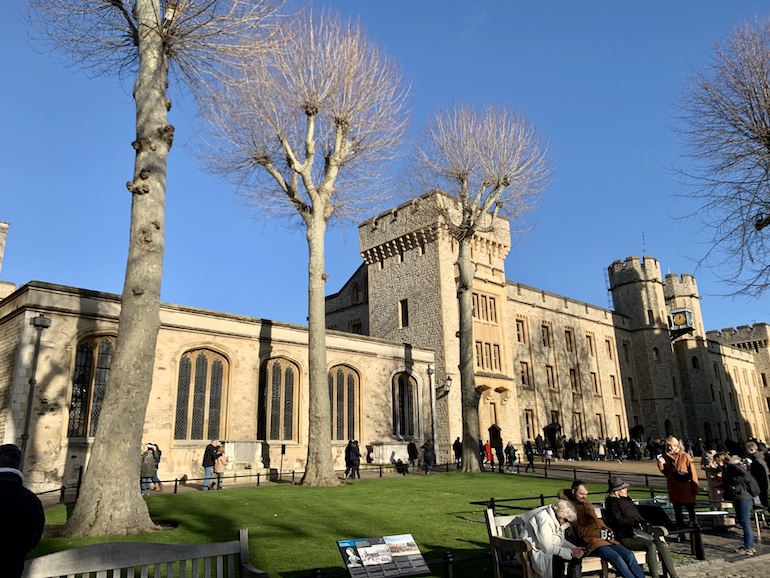 Tower Green at the Tower of London – the most perfect village green in England. Photo Credit: © Antony Robbins.
Tower Green at the Tower of London – the most perfect village green in England. Photo Credit: © Antony Robbins.
Beauchamp Tower + Bloody Tower
The Beauchamp Tower is where high-profile aristocratic prisoners awaited sentence. It often didn’t turn out well.
The Bloody Tower also has unsurprisingly given its name, a rather dark history. The young nephews of Richard III, who became king in 1483, were allegedly murdered here. The two boys – the rightful heir to the throne, King Edward V, and his younger brother, Richard, Duke of York – had been placed in the tower after their father the king’s death and eventually disappeared, presumed by many to have been killed on the orders of their uncle.
Another well-known prisoner in the Bloody Tower was serial offender Sir Walter Raleigh. He was banged up here three times. The buccaneering Sir Walter enjoyed a flirty relationship with Queen Elizabeth I, despite the fact that she kept jailing him. His luck ran out when James I became king. He had Raleigh beheaded in 1618.
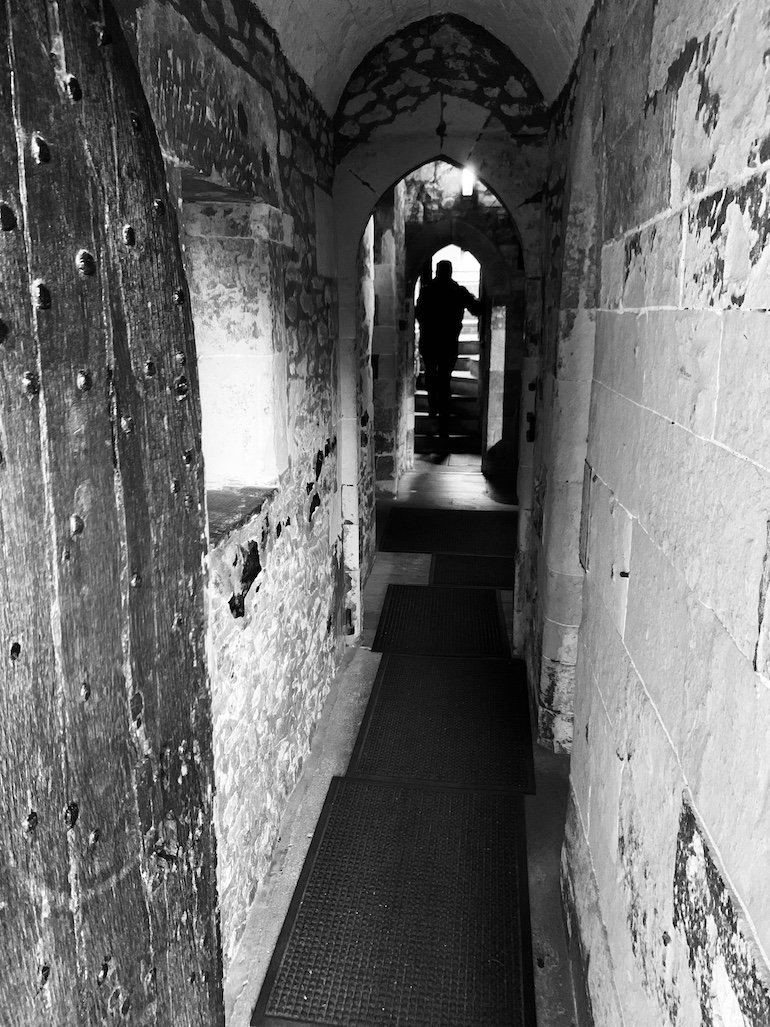 The narrow and rather spooky 13th-century corridor of the Broad Arrow Tower. Photo Credit: © Antony Robbins.
The narrow and rather spooky 13th-century corridor of the Broad Arrow Tower. Photo Credit: © Antony Robbins.
Salt Tower
Despite its to-die-for river view, the Salt Tower is one of the lesser-known buildings at the Tower of London. Built for King Henry III, this tower was where Scottish King John Balliol was imprisoned in the 1290s. It was later used as a salt store – a then luxurious condiment enjoyed exclusively by the nobility.
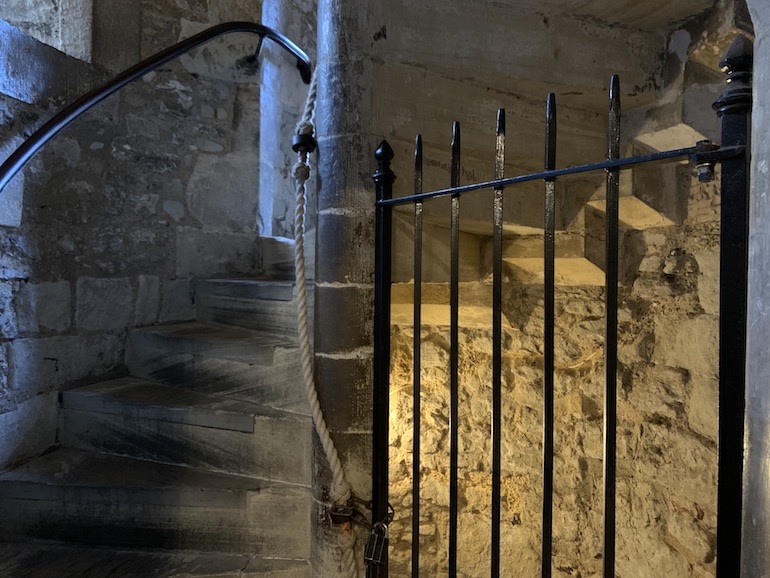 The twisting staircase leading to the Salt Tower at the Tower of London. Photo Credit: © Antony Robbins.
The twisting staircase leading to the Salt Tower at the Tower of London. Photo Credit: © Antony Robbins.
Constable Tower
Nearby is Henry III’s Constable Tower. It’s named after the Constable of the Tower of London – the top brass, then, as now, responsible for the management of the Tower Estate.
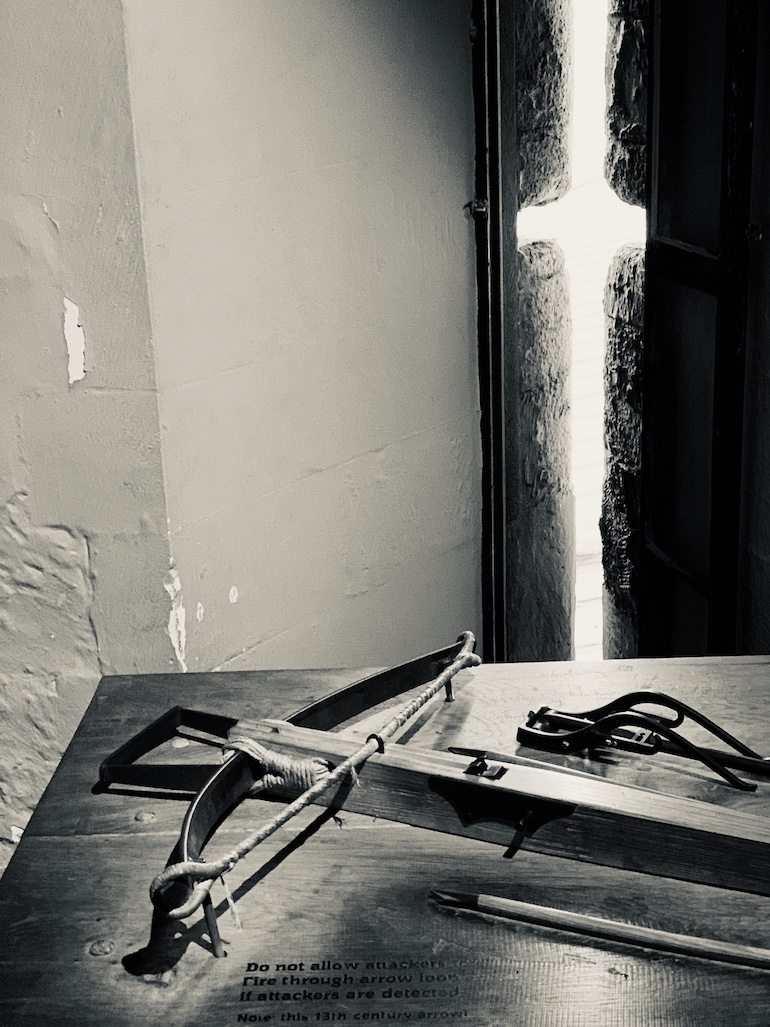 A crossbow rests by an arrow loop window in the Constable Tower at Tower of London. Photo Credit: © Antony Robbins.
A crossbow rests by an arrow loop window in the Constable Tower at Tower of London. Photo Credit: © Antony Robbins.
Wardrobe Tower
The ruinous Wardrobe Tower was built in the 1190s for King Richard “The Lionheart”. Richard spent only about six months of his ten-year reign in England. Nevertheless, thanks to those 1950s Robin Hood films, he enjoys excellent branding.
The Wardrobe Tower was used to store royal jewels and vestments. It was a garderobe – a lavatory doubling up as a clothes cupboard. Toilet smells were thought to discourage moths. Modern Londoners still fight a losing battle against those most persistent of pests.
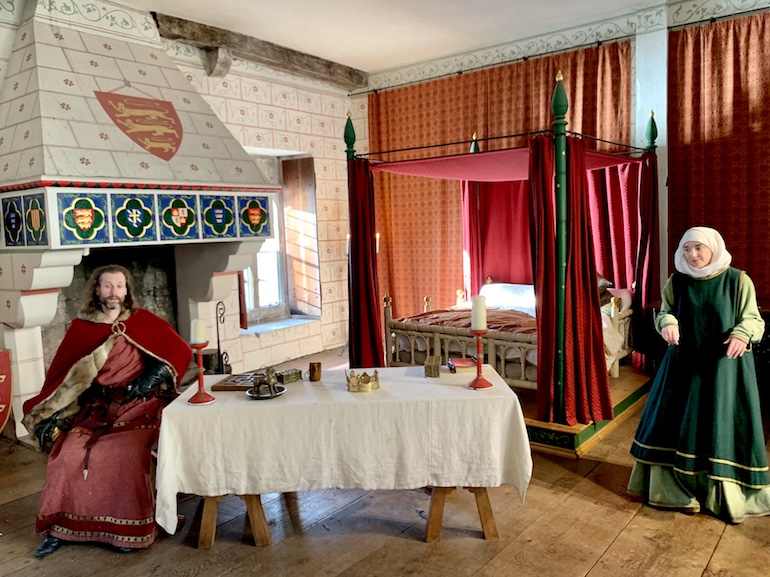 Actors bring Henry III’s Medieval Palace – in St Thomas’s Tower – to life Tower Green. Photo Credit: © Antony Robbins.
Actors bring Henry III’s Medieval Palace – in St Thomas’s Tower – to life Tower Green. Photo Credit: © Antony Robbins.
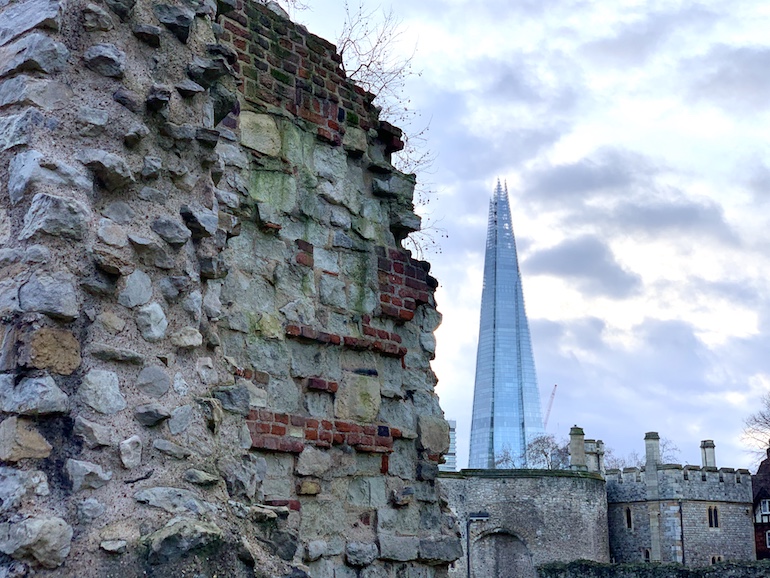 The remains of the 13th-century Wardrobe Tower, next to The Shard – UK’s tallest building, opened in 2013. Photo Credit: © Antony Robbins.
The remains of the 13th-century Wardrobe Tower, next to The Shard – UK’s tallest building, opened in 2013. Photo Credit: © Antony Robbins.
Martin Tower – Home of the Crown Jewels
The Martin Tower has a surprising history. In the First World War, 11 German spies were held here.
In the 17th century, the Crown Jewels were stored here. In 1671, a fraudster, speculator and desperado called Colonel Thomas Blood made an ill-fated attempt to steal them.
Blood became well-known to the jewel-keeper, Talbot Edwards, following a series of trips to see the gems. On his final visit, Blood brought along a few other people as reinforcements. They attacked the unfortunate Edwards and fled along the battlements with the royal loot. Legend has it that Edwards’s soldier son, Wyeth, foiled the plot – returning home from fighting in Flanders at just the right moment, arresting Blood and his henchmen.
Far from facing the axeman’s block, Blood met King Charles II and was then granted lands and a pension. Why was the king so generous? Perhaps the so-called Merrie Monarch just loved a rascal? Maybe he was in on the plot? We’ll never know. Blood died in Westminster in 1680.
The story doesn’t quite end there. The ‘Blood-line’ finally came good. In 1879, the Colonel’s illustrious descendant, Field Marshall Sir Bindon Blood, commanded the Malakand Field Force, patrolling the wild North-West Frontier in present-day Pakistan.
The Field Marshall handpicked his officers and favoured the bold and the ambitious. One of those was a dashing 23-year-old lieutenant – a young man called Winston Churchill.
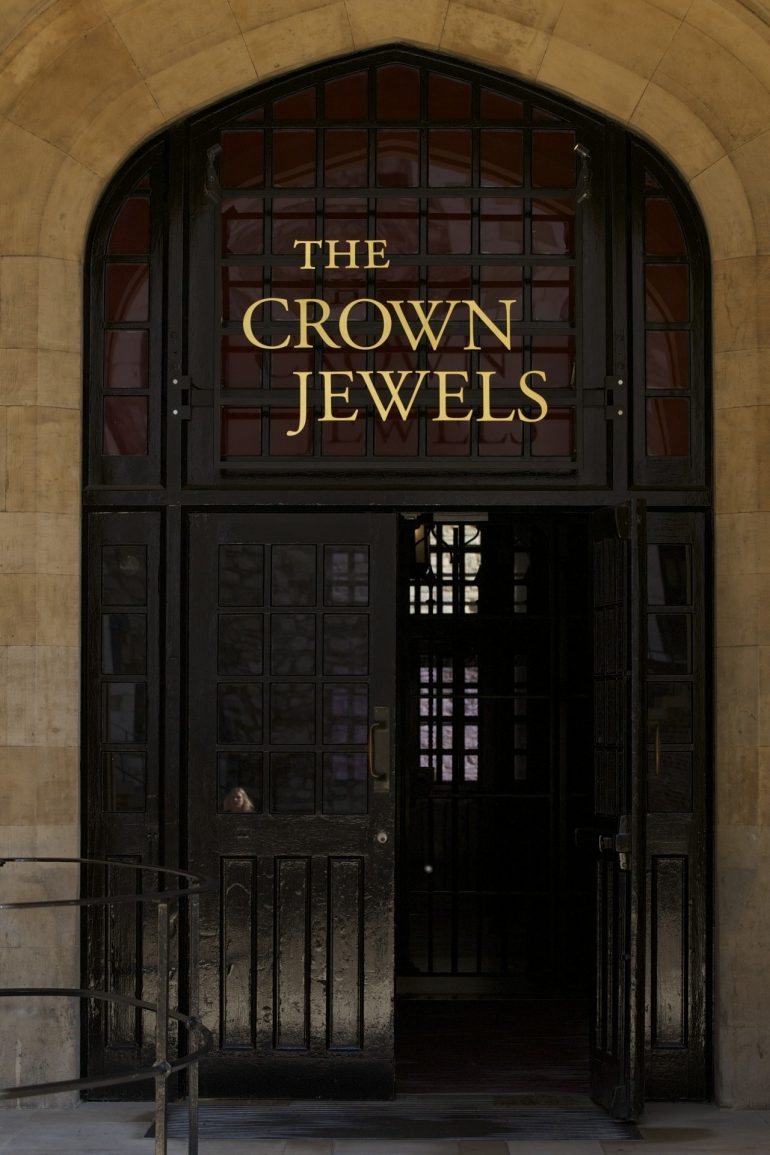 Entrance to the Martin, home of the Crown Jewels at Tower of London. Photo credit: © Historic Royal Palaces.
Entrance to the Martin, home of the Crown Jewels at Tower of London. Photo credit: © Historic Royal Palaces.
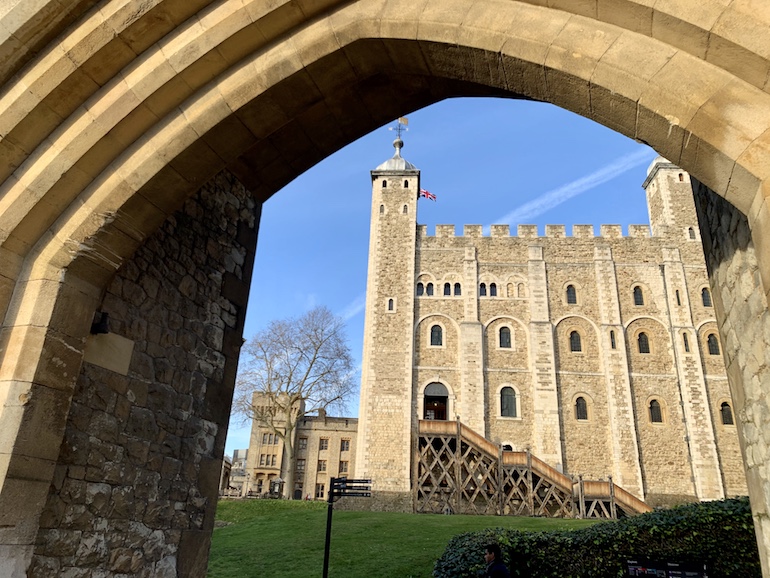 The southern face of the White Tower Built in the 1080s – the oldest part of the Tower of London estate. Photo Credit: © Antony Robbins.
The southern face of the White Tower Built in the 1080s – the oldest part of the Tower of London estate. Photo Credit: © Antony Robbins.




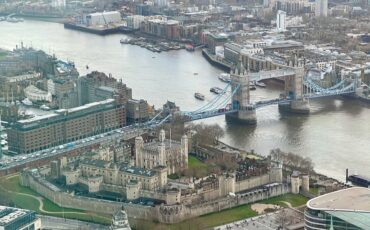


Leave a Reply